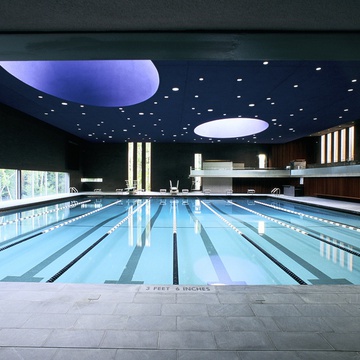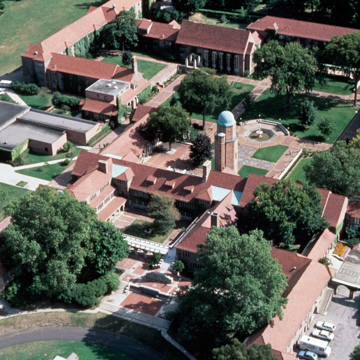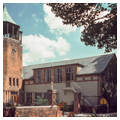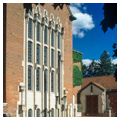Opened in 1927, Cranbrook School was Saarinen's first executed building in this country. Saarinen's complex consists of handsomely articulated brick buildings (academic building, dining hall, and dormitories) topped with steep, red tile roofs and grouped around courts. Although the general character of this ensemble recalls medieval collegiate complexes, the stylistic character is the result of a creative synthesis using abstract medieval motifs and contemporary Scandinavian work in the spirit of Ostberg and Nyrop. Cranbrook School, which was awarded the Gold Medal of the Architectural League of New York in 1934, represents Saarinen's finest work in America. The buildings are enhanced with wrought-iron work by Oscar Bach and sculptural ornamentation by Geza Maroti. The quadrangle features bronze sculptures by Paul Manship and Carl Milles.
Designed by Williams and Tsien of New York City and landscaped by Osler, Williams Natatorium is a superb all-purpose indoor swimming pool. The natatorium connects to the existing Keppel Gymnasium and anchors the east–west axis from the west terrace of Cranbrook House. Dark purplish-brown elongated brick and panels of bluish-green glazed brick rise in the exterior walls of the structure to a cornice band of pale bluish-green glazed brick. Lightly sandblasted concrete and concrete block in dark reddish-purple that is sand-cast with iridescent aggregate chips in earth colors form the interior walls. Hydraulically powered mahogany louvered wall panels swing open to merge the pool with the outdoors. Reminiscent of the unglazed eye in the coffered dome of the Pantheon in Rome, two elliptical oculi in the cobalt blue ceiling retract to reveal the sky. Huge windows permit views of the woods. Williams and Tsien received an AIA National Honor Award in 2001 for the natatorium.











